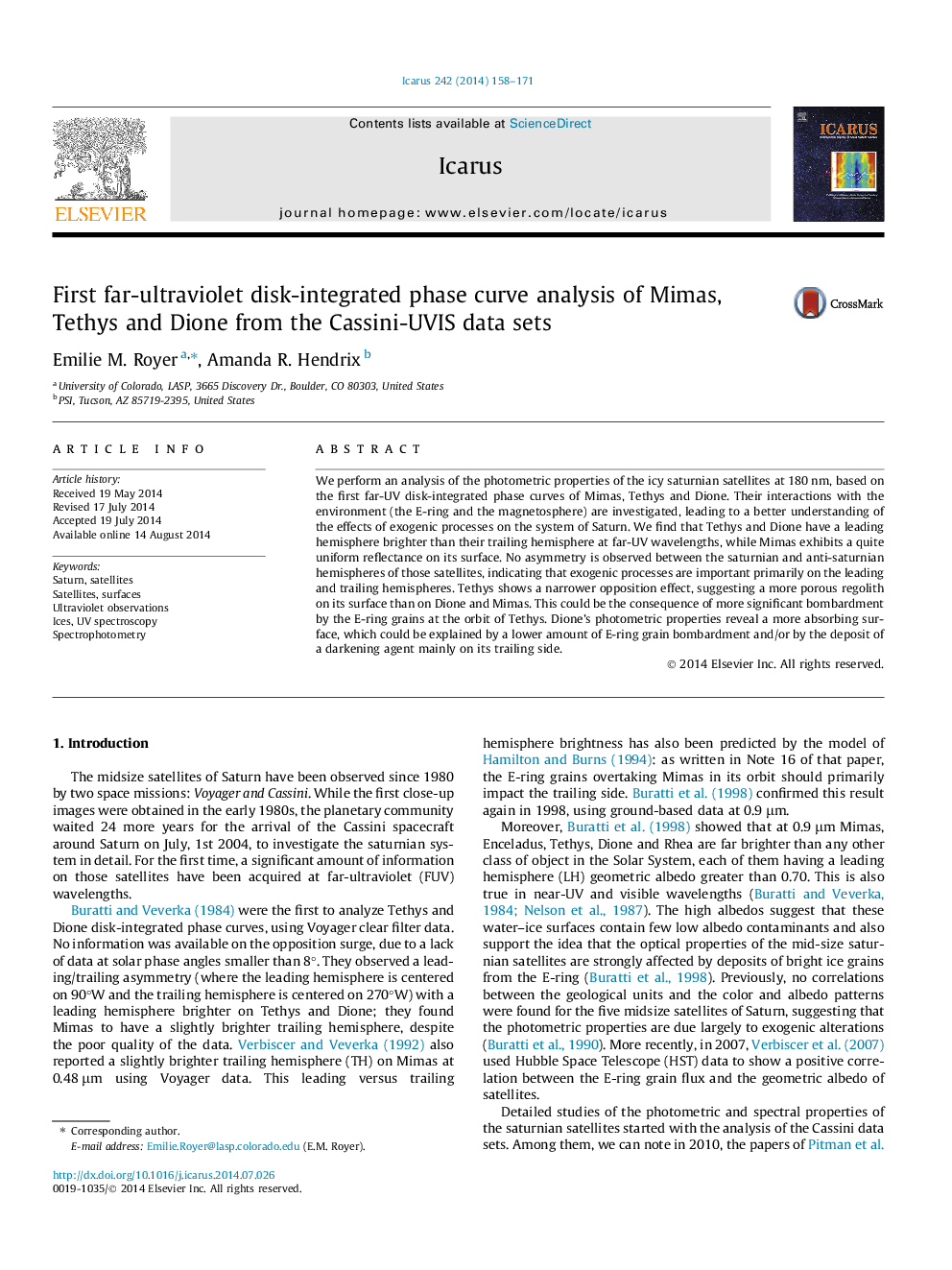| Article ID | Journal | Published Year | Pages | File Type |
|---|---|---|---|---|
| 8137613 | Icarus | 2014 | 14 Pages |
Abstract
We perform an analysis of the photometric properties of the icy saturnian satellites at 180Â nm, based on the first far-UV disk-integrated phase curves of Mimas, Tethys and Dione. Their interactions with the environment (the E-ring and the magnetosphere) are investigated, leading to a better understanding of the effects of exogenic processes on the system of Saturn. We find that Tethys and Dione have a leading hemisphere brighter than their trailing hemisphere at far-UV wavelengths, while Mimas exhibits a quite uniform reflectance on its surface. No asymmetry is observed between the saturnian and anti-saturnian hemispheres of those satellites, indicating that exogenic processes are important primarily on the leading and trailing hemispheres. Tethys shows a narrower opposition effect, suggesting a more porous regolith on its surface than on Dione and Mimas. This could be the consequence of more significant bombardment by the E-ring grains at the orbit of Tethys. Dione's photometric properties reveal a more absorbing surface, which could be explained by a lower amount of E-ring grain bombardment and/or by the deposit of a darkening agent mainly on its trailing side.
Keywords
Related Topics
Physical Sciences and Engineering
Earth and Planetary Sciences
Space and Planetary Science
Authors
Emilie M. Royer, Amanda R. Hendrix,
